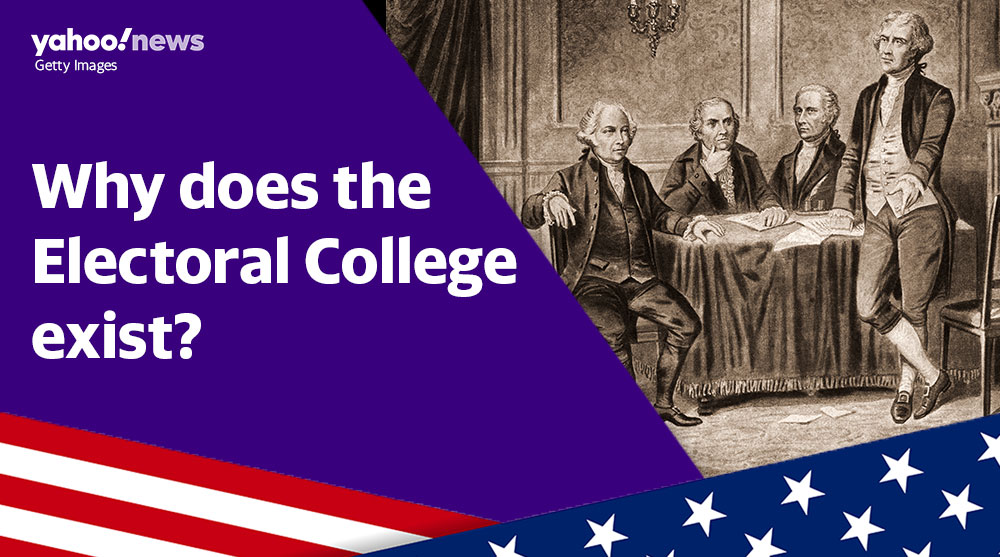If you're still wondering what exactly the US Electoral College is, here's a thread to help you understand it a little better:
#Elections2020 #USElections2020
#USElections2020
#Elections2020
 #USElections2020
#USElections2020
What is the Electoral College?
The Electoral College (EC) is the group of people that elect the United States President and Vice President. When Americans go to the polls, they’re not directly voting for the candidates, but for ‘electors’.
The Electoral College (EC) is the group of people that elect the United States President and Vice President. When Americans go to the polls, they’re not directly voting for the candidates, but for ‘electors’.
In 1787 the Founding Fathers created it as an alternative to the popular vote. In part to ensure smaller states had a say, but also to appease southern slaveholding states who wanted their population size to be reflected, even though many of those people (slaves) couldn’t vote.
How many Electoral College votes does each state get?
To reflect its population size, the number of EC votes a state has is equal to the number of seats it has in the US Congress (the House of Representatives and the Senate). So a minimum of three and a maximum of 55.
To reflect its population size, the number of EC votes a state has is equal to the number of seats it has in the US Congress (the House of Representatives and the Senate). So a minimum of three and a maximum of 55.
How many EC votes win the election?
There are 538 electors in the Electoral College, so a candidate needs to win 270 electoral votes (half of the electoral college votes plus one), to reach the White House. It’s why the election is sometimes referred to as the “Race to 270”.
There are 538 electors in the Electoral College, so a candidate needs to win 270 electoral votes (half of the electoral college votes plus one), to reach the White House. It’s why the election is sometimes referred to as the “Race to 270”.
According to @NCSLorg: “When voters in each state go to the polls, they’re selecting their presidential electors. The names of electors are not on the ballot in most states. Rather, when a voter casts a vote for a presidential candidate...”
“...s/he is also casting a vote for the electors already selected by the party of that candidate. If a majority of voters in a state vote for the Republican candidate for president, the Republican slate of electors is elected” or vice versa.
A “faithless elector” is an elector who votes against their state’s popular vote. In 15 of the 50 states, votes from faithless electors are removed, penalised, or cancelled, but elsewhere, there’s no punishment. Faithless electors have never changed the result of an election.
The electors tend to be a mixture of state and locally elected officials, party activists, local and state celebrities, and even ordinary citizens.
Fun fact: @HillaryClinton is one of 29 electors for the state of New York in this election.
Fun fact: @HillaryClinton is one of 29 electors for the state of New York in this election.
How does a candidate win EC votes?
If a candidate wins the popular vote they are awarded all of the state’s EC votes. This is the case in all but two states and it’s why swing states are so important: they may only be won by a small percentage, but the winner takes all.
If a candidate wins the popular vote they are awarded all of the state’s EC votes. This is the case in all but two states and it’s why swing states are so important: they may only be won by a small percentage, but the winner takes all.
What’s a ‘swing state’?
A swing state is somewhere where the two major parties have a similar level of support, usually resulting in a tight race. It means the state’s popular vote can change with each election.
A swing state is somewhere where the two major parties have a similar level of support, usually resulting in a tight race. It means the state’s popular vote can change with each election.
For example: out of the last 12 elections, Florida has voted Republican eight times, and Democrat four times – the state voted with the winning candidate 11 of 12 times.
What are the swing states in this election?
This year, experts and analysts believe that Michigan, Wisconsin, Pennsylvania, Arizona, Florida, and North Carolina are the six that will most likely determine the outcome of the election.
This year, experts and analysts believe that Michigan, Wisconsin, Pennsylvania, Arizona, Florida, and North Carolina are the six that will most likely determine the outcome of the election.
Yes. This has happened five times, including in the 2016 election. Hillary Clinton amassed more than 2.5 million votes more than Trump, but because Trump got more votes by a small margin in a few key states, he gained their electoral college votes.
For more on the US Electoral College system, we've got an explainer for you on @YahooNewsAU:
#ElectoralCollege #USElections2020 https://au.news.yahoo.com/us-election-2020-electoral-college-system-explained-073652538.html
#ElectoralCollege #USElections2020 https://au.news.yahoo.com/us-election-2020-electoral-college-system-explained-073652538.html

 Read on Twitter
Read on Twitter




